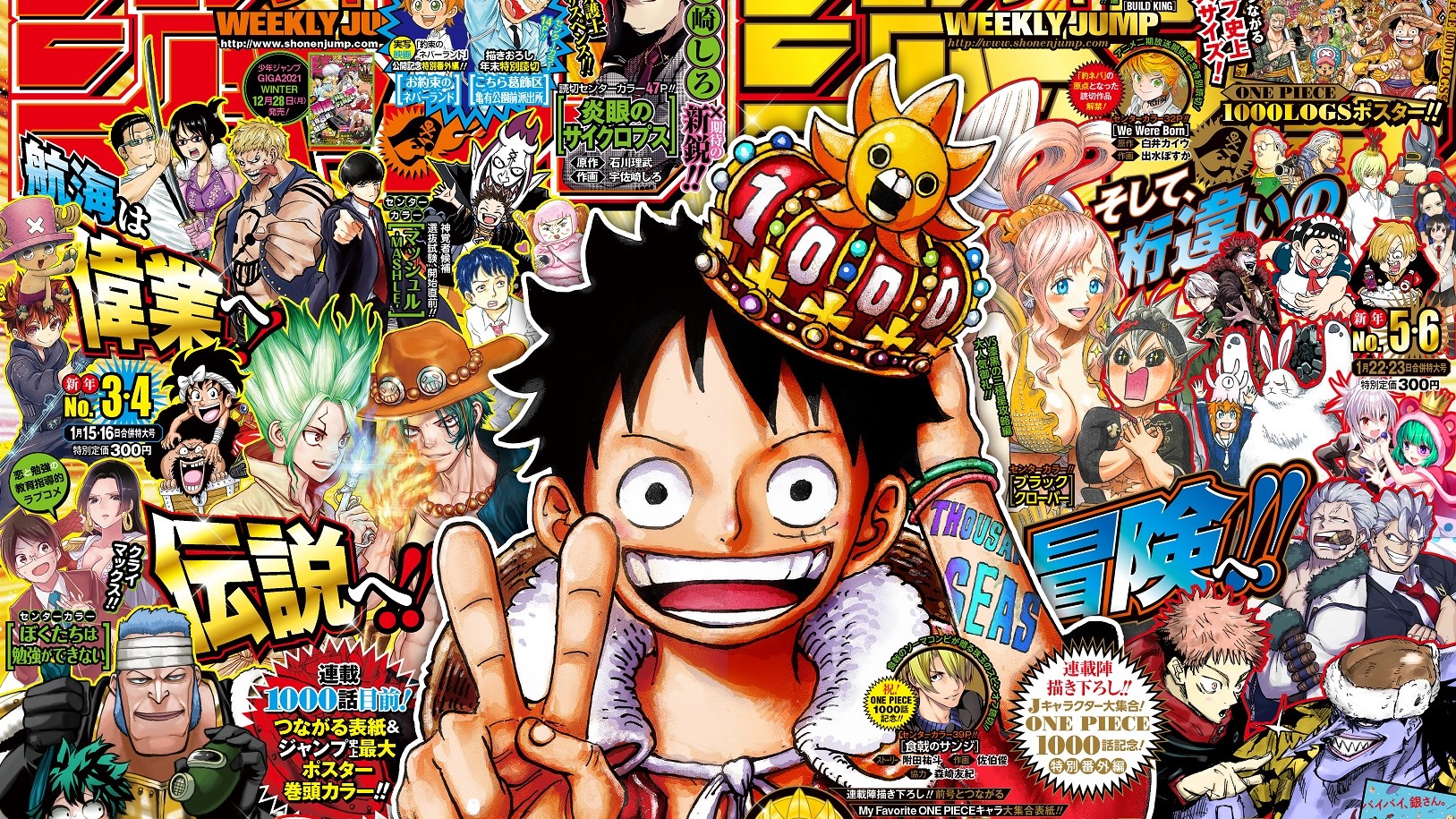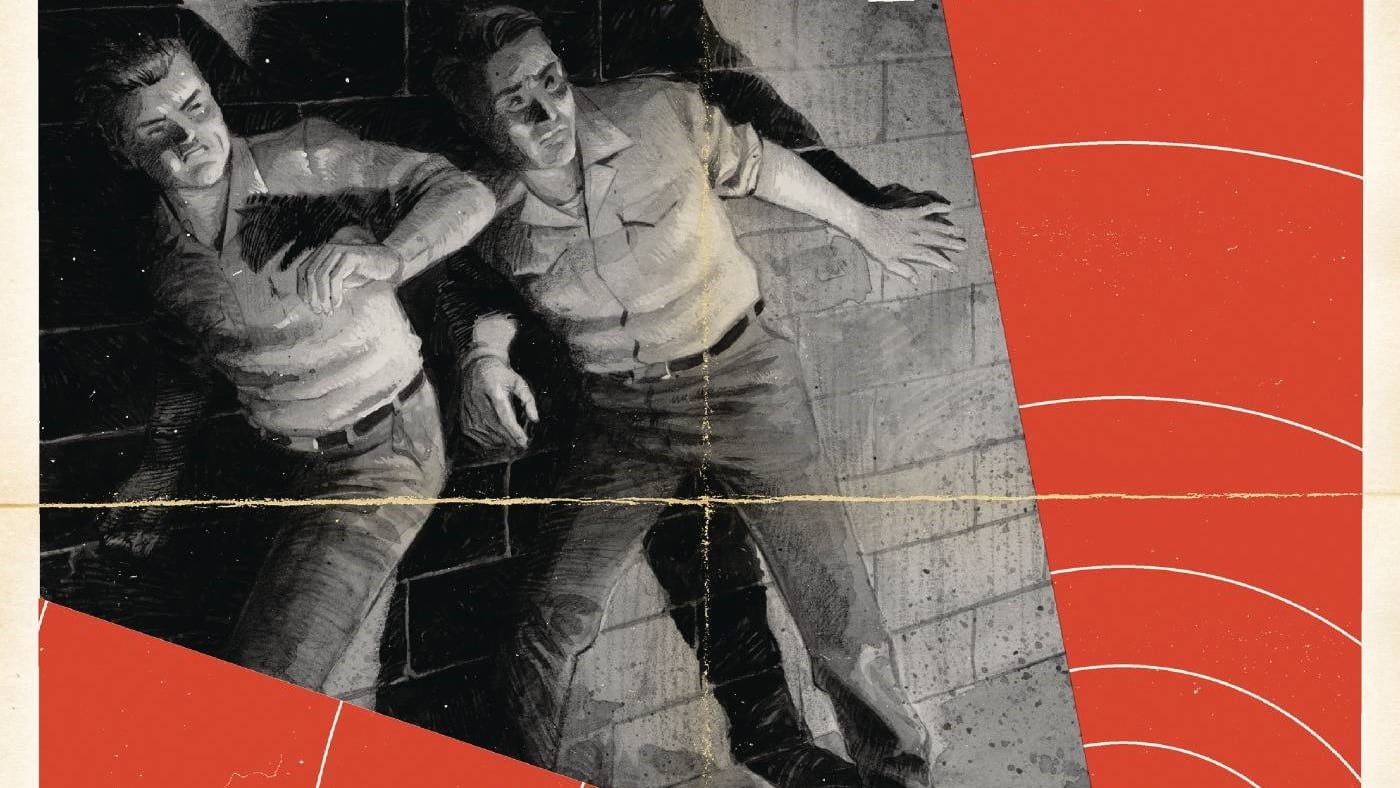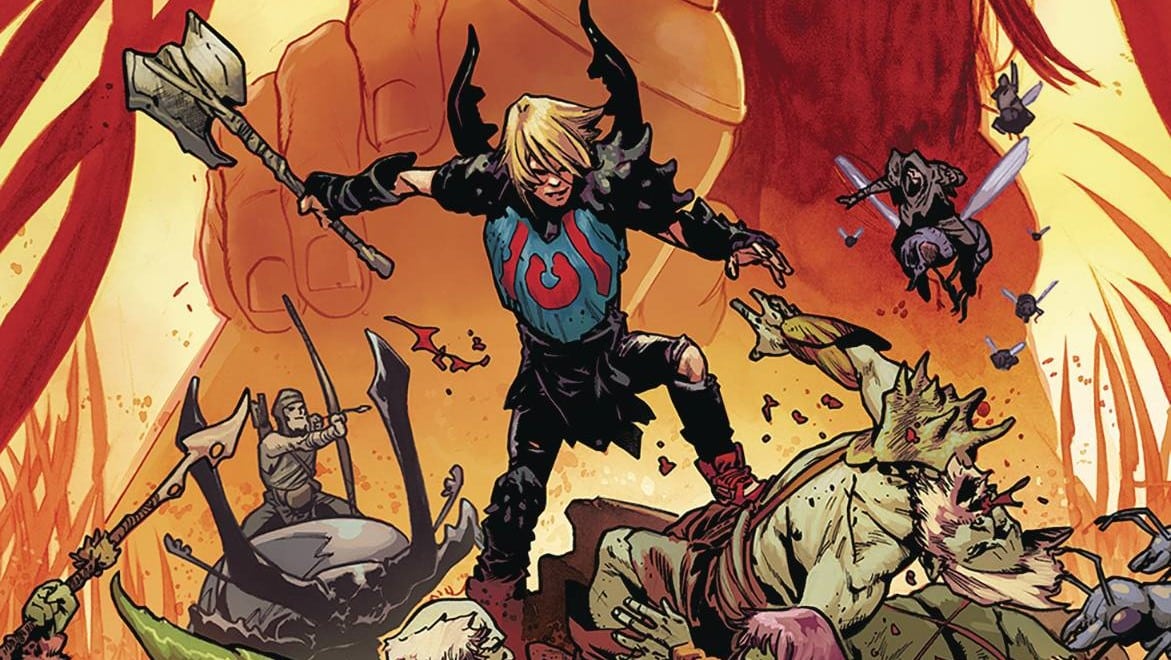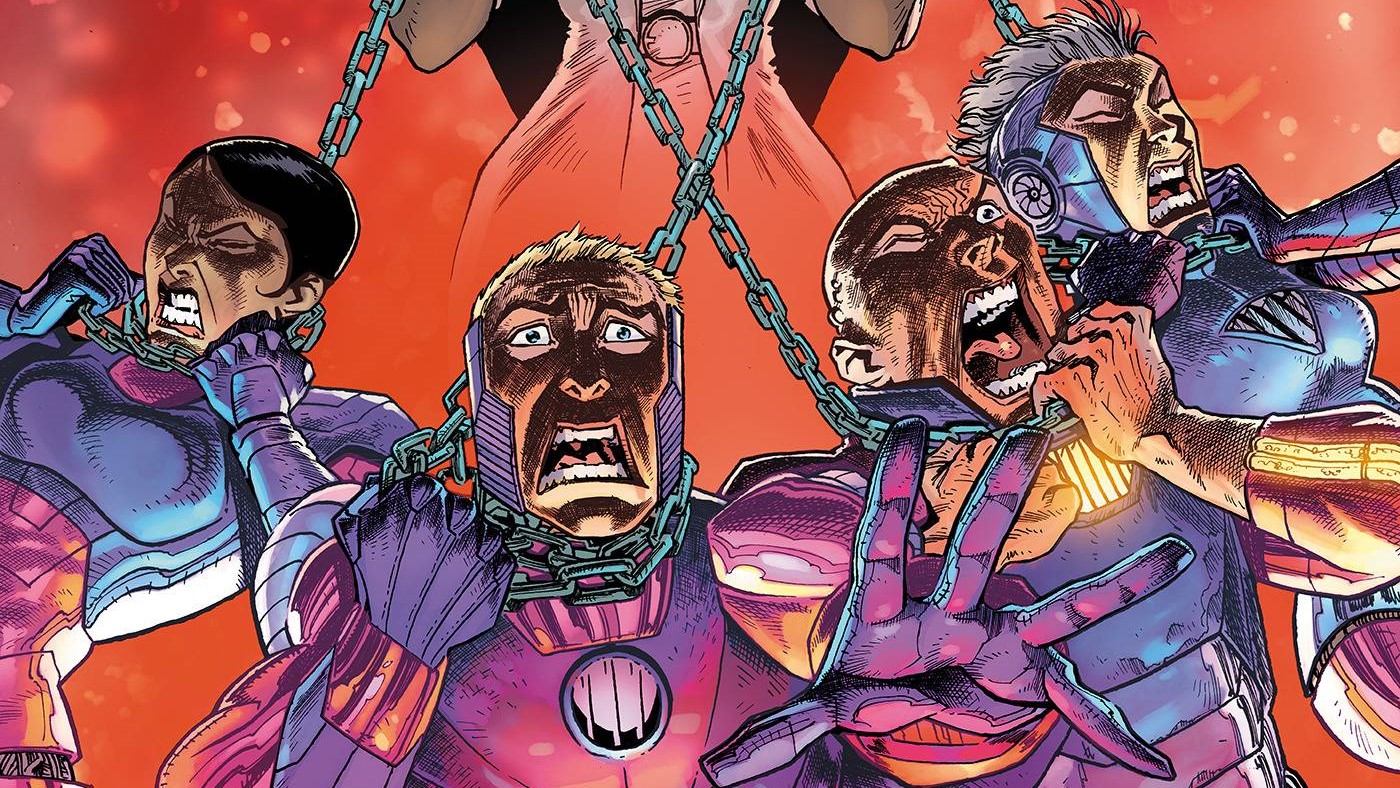Dating is hard in modern society, and it’s even harder when you’re a killer for hire. Find out if the legendary poison assassin can find a bride or if he’ll die trying in MARRIAGETOXIN #1, written by Joumyaku, illustrated by Mizuki Yoda and localized by Medibang Inc.
Life’s hard out in the frozen wastes, especially if you’re a young girl who wants to learn to be a magician. Fortunately, Glüna finds a friend in a possessed snowman willing to teach her the secrets of magic. What could go wrong? Ginka & Glüna is written and illustrated by Shinpei Watanabe, translated by Satsuki Yamashita and lettered by Steve Dutro.
Growing up is hard, but it gets even harder for Ruri when she wakes up with dragon horns. Fortunately, the youth of today seem much more interested in novelty than discrimination. RuriDragon #1 is written and illustrated by Masaoki Shindo, translated by Caleb Cook and lettered by Sara Linsley.
Ian: Will, we’ve been at this Leftovers business for over half a year now, and I have to say, you’ve made some questionable decisions. I mean, NewThink #1 AND #2? It’s unconscionable. I’ve decided to take things into my own hands. Of course, if I have free reign over this column for the week, there’s only one place we could be headed. Tell me Will, how would you describe your manga power level?
Will: But what about the issues of NewThink we haven’t covered? I should get credit for that, goddamnit. As to your question, I’d say it’s minimal. My wife has us watching the adaptation of Fruits Basket, and that’s the closest I’ve gotten to manga — which is to say I haven’t read a single one.
Ian: Of course, there’s a bit of a logistical issue to reviewing manga. For one thing, most series aren’t released in America in their weekly format, but as translated volumes (the equivalent to “graphic novels” for you Westaboos out there). That means that, if we want to review a single “issue,” we’ll have to go to Weekly Shonen Jump, which releases high-quality translations of their series in America, the same day as in Japan. However, that means we’re essentially reviewing YA comics this week. And, to keep in the spirit of the column, I had to pick recent series that I haven’t read — another very small number. On top of that, I have no idea if any of these series are good! Hey, wait a minute, is picking comics to review actually a hard and thankless job?
Will: Oh sheesh, I had no idea these were YA — I’m out of my element here, Walter! Also, the secret to picking good comics to review is tuning out your collaborator’s complaints.
MARRIAGETOXIN #1: The World’s Worst Blind Date

Ian: MARRIAGETOXIN comes to us from Jump+, which is Weekly Shonen Jump’s online-first platform, where they typically publish either series with irregular schedules that don’t fit the weekly format or more mature works (like Chainsaw Man). Despite its darker themes — assassination and marriage swindling — MARRIAGETOXIN (all-caps required) does not strike me as particularly grim. It’s got a funny mix of thriller, action, romance and comedy elements.
The main character is an assassin specializing in poison who’s feeling the pressure to get married and pass on his family techniques, and doesn’t want his family to force his sister to break up with her girlfriend. To that end, he recruits the marriage swindler he was hired to kill to find him a bride. It’s sort of like Grosse Pointe Blank by way of Five Deadly Venoms. How did this premise work for you, Will?
Will: Fruits Basket (again, the only thing I’m even vaguely familiar with) is also premised on family, relationships and other assorted familial obligations, so this was a good place for me to start. I also liked the idea of a family of assassins who stick to poison. What cowards! Klingons would have none of this.
Ian: I liked Mizuki Yoda’s art on this series, particularly the expressions. I got some good laughs out of the bug-using assassin talking about his fiancee, and Gero’s reaction to his initial rejection. Despite the fact that a good number of people die or are hurt in this issue, there’s very little actual fighting on page. I think the focus on the characters was good, but I thought the blocking in some of the scenes was unclear, particularly the opening scene with the human furniture.
Will: The human furniture as a bit was a weird opener that would have played better with some exposition, but it seems like there’s not much exposition across these three books generally. And it makes sense there wasn’t much fighting, right? If you’re going to be good at poison, you’re likely not going to be good at fisticuffs.
Ian: Finally, something I didn’t expect from this series, especially with it being a Shueisha property, was its gay themes. The main character’s sister is a lesbian, and his primary motivation in this chapter is finding a way to keep his conservative family from breaking up her and her girlfriend. Then, of course, there’s the twist at the end where Kinosaki reveals he’s a man. In my mind, this is setting up a gay romance between the two main characters. The only downer here is that I suspect MARRIAGETOXIN is only on Jump+, instead of the main magazine, because they didn’t think gay relationships were age appropriate for the 12-and-under crowd who read Jump.
Will: To me, it was a real head scratcher of a finish. And maybe because I don’t trust most writers to tell this story, I’m a little skeptical of whether this could play out in a way that’s both entertaining and respectful. But there’s always a chance, right?
Ginka & Glüna #1: Frosty the Snowman / Knew the Demonfire Was Hot That Day

Ian: We’ve gone pretty far in another direction with this series. Ginka & Glüna feels like more of a traditional Weekly Shonen Jump series. We’ve got a plucky, optimistic main character with prodigious magical talent alongside a marketable mascot-type who also fills the mentor role. While I’m glad we got all the training arc stuff out of the way in the first chapter, I didn’t think there was anything too remarkable here to grab me. Glüna is a fairly typical Shonen Jump main character: happy-go-lucky, immensely powerful and with a sheltered upbringing. It’s all very Dragon Ball — wait, Will, do you know what Dragon Ball is?
Will: It’s another anime thing, isn’t it? Or is it one of the pokomons?
But, yeah, this all seemed pretty standard here — aside from the random five-year time jump.
Ian: The characters in MARRIAGETOXIN were really interesting: They were somewhat misanthropic, funny and had their own dreams and desires. Here, the characters felt pretty rote. The premise and setting also felt bare-bones, considering we only really saw a frozen wasteland and just a bit of magic, which was itself nebulously defined. The appearance of the demon at the end, dispatched in two pages by our heroes, felt incredibly perfunctory, as if the author wasn’t sure they could get away with doing a first issue without some kind of fight.
Will: This thing lulled me into such relative sleep I didn’t even remember there being a fight. But I will say this for the series — it at least had a sensibility that I recognized (again from Fruits Basket). Ginka is this tragic figure bound by magic to a certain place until … he’s just not? There’s power and mystic abilities but also a real sense of sadness.
Ian: I do have to give some major credit to Shinpei Watanabe’s splash pages in this issue. The scene where Glüna sees the aftermath of the wizard’s duel is beautiful, as is the page of her jumping off the cliff with Ginka. I think the visuals were really strong in this issue, but they weren’t tied to a concept strong enough to interest me in reading more.
Will: There don’t seem to be any challenges to overcome, ya know? The end of the issue was a simple declaration: We’re going to get your body, Ginka! We’re not given any reason as to why that might be difficult or even interesting to follow up on.
RuriDragon #1: Turn and Face the Strange Ch-Ch-Changes

Ian: Something I like about manga is the wide variance of genres. We’ve both complained that it feels like every indie comic is some variation of crime, horror or comedy. RuriDragon feels like a story about puberty, but despite the fantastical elements (as our protagonist Ruri wakes up with dragon horns), it felt very naturalistic. Previous teenager-focused series we’ve read have had really terrible dialogue, but I felt like this issue did a good job of representing how people actually talk and express their feelings. If you’re going to tell a coming-of-age story, then you should be willing to put in the work to make your characters extra relatable.
Will: This was my favorite of the bunch if only for Ruri waking up with horns and her mom basically saying, “Yeah, that’s not enough to get you out of going to school. Sorry, kiddo.” It was legitimately funny without being saccharine or, as we had in the first story and you pointed out here, including characters who were unrelatable.
Ian: I really liked the relationship between Ruri and her mom. There was a surprising amount of open vulnerability for a first issue, and I liked how clearly we see their dynamic. I think it would be extremely easy for the author to pursue a single angle on this series: focusing on how turning into a dragon affects Ruri physically, or socially at school, or with her family. Instead, author Masaoki Shindo tries to synthesize all of these elements. Fortunately, this doesn’t crowd the issue, and I feel like we get enough time on each issue that the series has a strong foundation to go forward.
Will: If we could wake up with horns growing out of our heads and it not be a medical emergency, I think this story played as true to life as possible. Ruri is a curiosity at school, and, naturally, it prompts mom to seek out dad. That relationship has gotta be explored as the series continues, right? How did mom and dad meet? What made Ma Ruri interested in him? Have they stayed in touch over the years? Do dragons pay child support? These are important questions, Ian.
Ian: I think I would describe the art in this issue as “sparse.” The characters are well-rendered, and I like the visual variety on the students and how clearly we get Ruri’s emotions, but the backgrounds are almost nonexistent for pages at a time. I didn’t mind their absence, since as a veteran manga reader there’s basically no way to draw a high school that I haven’t already seen, but how did you feel about the visuals here? Otherwise, I loved the two-page sequence where Ruri breathes fire. I like that it ends on a close-up of her sneeze, and pulls back and slightly shifts the angle to show the flame.Something about the closed-single-panel page that precedes the fire does a great job setting up the full-bleed two-page spread after. Ace paneling work.
Will: We see this in Ginka & Glüna as well, but I wanted to ask you about the use of color here since I know nothing. Is it fairly standard practice to see a couple of opening pages in color? Is there any idea that you wouldn’t want to “waste” those on something as innocuous as a character brushing their teeth?
Ian: In Weekly Shonen Jump, color pages are carefully rationed. In this case, a debuting series like RuriDragon or Ginka & Glüna merits some color pages by default, in addition to a triple-length first chapter (your average WSJ chapter runs for around 20 pages, not 60). Authors are, however, totally free to use their color pages as they see fit. Established series typically use them on big splash pages unrelated to the chapter of the week, making them more like posters. New series, I’ve noticed, tend to use their color pages as the opening pages of the series.
However, I think it’s very fitting that RuriDragon uses such a rare commodity on something very quotidian.
Does This Smell OK?
- Sound Effects Watch: In RuriDragon, there’s a great “fssshhh” that emerges from the smoking remains of Ruri’s book after she first uses her fire breath.
- Kudos to the translations of “dang” and “welp” in RuriDragon — not sure how they read in the original Japanese, but it works here.
- Rapid fire questions:
- If you were an assassin, what would your signature technique be?
- Ian: I’ve always been kind of into that Acid Bath Killer fellow.
- Will: Boring people to death. See it in the faces of students all the time.
- Favorite snow-related memory?
- Ian: Sledding on the massive hill behind my grandma’s house.
- Will: Waiting up all night for snow to start in Alabama, getting to see a few flakes and then going to sleep and waking up to nothing in the morning because 1) it didn’t accumulate or 2) it already melted.
- If you developed the power of a mythical beast, which would it be?
- Ian: Ideally, something rad like the phoenix. Realistically, I’m more of a Fresno Nightcrawler.
- Will: Yeti. Already got the body hair for it!
- If you were an assassin, what would your signature technique be?
- I was today years old when I learned that *actual* Japanese restaurants rarely let customers take home leftovers.
- There’s a Japanese brewery that will take your leftover crusts from bakeries and other shops and turn it into beer.
- Cooking manga are a thing? At least one suggests turning leftover sushi into fried rice.







